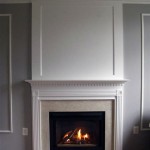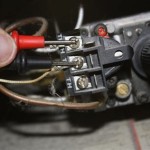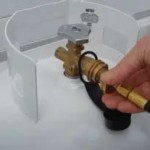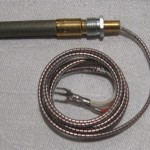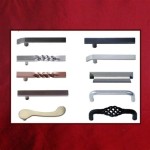Fireplace Fan Kit for Wood Fireplace: Maximizing Efficiency and Comfort
A wood-burning fireplace offers a unique ambiance and heating solution, but its efficiency can be significantly improved with the addition of a fireplace fan kit. These kits are designed to circulate warm air that would otherwise rise directly up the chimney, distributing it more evenly throughout the room. This article will explore the functionality, benefits, and considerations associated with installing a fireplace fan kit for a wood fireplace.
Understanding Fireplace Fan Functionality
The primary function of a fireplace fan kit is to enhance the convective heat transfer from the fireplace to the surrounding environment. Without a fan, the heat generated by the fire primarily rises via natural convection, creating temperature stratification within the room, meaning warmer air near the ceiling and cooler air closer to the floor. A fireplace fan actively draws cool air from the room, passes it across the heated fireplace surfaces, and then discharges the warmed air back into the room at a lower level, promoting more uniform temperature distribution. Most kits consist of a fan unit, a power supply (often a plug-in transformer), and a thermostatic control that regulates the fan's operation based on the fireplace's temperature.
The efficiency of a fireplace is often measured by how effectively it converts the energy stored in wood into usable heat within a room. A significant portion of the heat generated can be lost through the chimney. A fireplace fan kit helps to reduce this loss by capturing a greater percentage of the heat and directing it into the living space. By improving heat circulation, the thermostat on the central heating system may be prompted to cycle less frequently, potentially resulting in lower overall energy consumption and reduced heating costs.
There are several types of fireplace fans available, each designed to fit specific fireplace configurations. Some models are designed to sit directly on the hearth, while others are designed to be installed within the firebox itself. Some even include magnetic attachments for easy installation and removal. The selection of the appropriate fan kit depends on factors such as the size of the fireplace opening, the depth of the firebox, and the desired level of heat distribution.
The operation of a fireplace fan is typically automated through a thermostat. This allows the fan to turn on when the fireplace reaches a certain temperature and to turn off when the fireplace cools down. This feature prevents the fan from running unnecessarily and ensures that it is operating only when it is actively contributing to heat distribution. Some models also offer manual speed controls, allowing the user to adjust the fan speed to suit their individual comfort preferences and heating needs.
The airflow capacity of the fan, measured in cubic feet per minute (CFM), is a critical factor in determining its effectiveness. A higher CFM rating indicates that the fan can move a larger volume of air, allowing for faster and more efficient heat distribution. The appropriate CFM rating will depend on the size of the room being heated and the intensity of the fire. It is generally recommended to select a fan with a CFM rating that is appropriate for the room's square footage to ensure optimal performance.
Benefits of Installing a Fireplace Fan Kit
The advantages of utilizing a fireplace fan kit extend beyond merely improving heat circulation; they encompass aspects of comfort, energy efficiency, and overall cost savings. The most prominent benefit is the enhanced distribution of heat throughout the room. Without a fan, heat tends to accumulate near the ceiling, leaving the lower areas of the room feeling cooler. A fan kit actively mixes the air, creating a more uniform temperature gradient and improving overall comfort, especially in larger rooms or those with high ceilings.
Beyond comfort, the improved heat distribution can also lead to significant energy savings. By more effectively utilizing the heat generated by the fireplace, the thermostat on the central heating system may trigger less frequently. This can translate into a reduction in energy consumption by the primary heating system, potentially lowering utility bills. The magnitude of the savings will depend on factors such as the frequency of fireplace use, the efficiency of the primary heating system, and the insulation levels of the home.
Another advantage is that a fireplace fan can reduce the amount of time it takes to heat a room. By quickly distributing the heat, the room will reach a comfortable temperature faster, allowing the occupants to enjoy the warmth of the fireplace sooner. This is particularly beneficial in colder climates where quick heating is desired.
Furthermore, some fireplace fan kits can improve the overall efficiency of the fireplace itself. By reducing the temperature stratification within the firebox, the combustion process may become more efficient, leading to a more complete burning of the wood. This can result in less creosote buildup in the chimney, reducing the risk of chimney fires and extending the life of the chimney liner.
Finally, the installation of a fireplace fan kit often involves minimal disruption and can be easily accomplished by a homeowner with basic tools. Many kits are designed for easy installation and come with detailed instructions. This allows homeowners to enjoy the benefits of improved heat circulation without the need for professional installation, saving on labor costs.
Key Considerations When Choosing and Installing a Fireplace Fan Kit
Selecting the right fireplace fan kit and ensuring its proper installation are crucial steps in maximizing its effectiveness and safety. Several factors must be considered to make an informed decision. The first consideration is the size and type of fireplace. The physical dimensions of the firebox and the opening will determine the size and type of fan kit that can be accommodated. Ensure that the kit is appropriately sized to fit comfortably within the fireplace without obstructing the airflow or posing a safety hazard.
Another important consideration is the CFM (cubic feet per minute) rating of the fan. This rating indicates the volume of air that the fan can move per minute. A higher CFM rating is generally desirable for larger rooms, while a lower CFM rating may be sufficient for smaller rooms. It is important to select a fan with a CFM rating that is appropriate for the size of the room to be heated to ensure optimal performance.
The noise level of the fan is also an important consideration, especially for those who value a quiet environment. Some fans are designed to operate more quietly than others. Look for models that are specifically designed for low noise operation. Reading customer reviews can provide valuable insights into the noise levels of different fan models.
Before installation, it is essential to carefully read and understand the manufacturer's instructions. Ensure that the kit is installed according to the instructions and that all safety precautions are followed. Improper installation can lead to reduced performance, increased noise, or even safety hazards. If unsure about any aspect of the installation process, it is best to consult with a qualified professional.
Regular maintenance is also necessary to ensure the continued performance and longevity of the fan. Periodically clean the fan blades and surrounding areas to remove dust and debris. This will help to maintain airflow and prevent the fan from overheating. Inspect the power cord and connections for any signs of damage and replace them if necessary.
Finally, ensure that the electrical outlet used to power the fan is properly grounded and protected by a ground fault circuit interrupter (GFCI). This will help to prevent electrical shocks and protect the fan from damage due to power surges.
By carefully considering these factors and following the manufacturer's instructions, homeowners can select and install a fireplace fan kit that will effectively improve heat circulation, enhance comfort, and potentially reduce energy costs. Fireplace fan kits offer a practical and cost-effective way to maximize the benefits of a wood-burning fireplace while minimizing energy waste.
Exploring online resources and comparing different models can provide a broader understanding of the available options and help in making an informed decision tailored to specific needs and fireplace configurations. Customer reviews and expert opinions can further refine the selection process, ensuring that the chosen fireplace fan kit meets expectations for performance, durability, and ease of use.

Fireplace Blower Fans What You Need For Heat Full Service Chimney

Gfk 160a Blower Fan Kit For Majestic Direct Vent Fireplaces

Fireplace Blower Fan Kit For Desa Bk Bkt Fmi Vanguard Comfort Flame Glow

Fireplace Blowers Explained How Fans Work Regency

Ep 62 Napoleon Wood Stove Replacement Fireplace Blower Fan Kit Hearth Trends

Fireplace Blower Fan Kit For Regency Wood Gas Stove 910 157 P

Rcfk Fireplace Blower Kit Overview

S50 Fan Kit Friendly Fires

Sd Variable Pbar 2427 Fireplace Blower Fan Kit For Pleasant Hearth Grillpartsreplacement Bbq Parts Retailer
Related Posts

